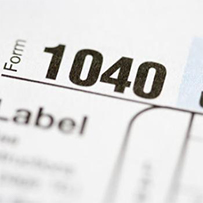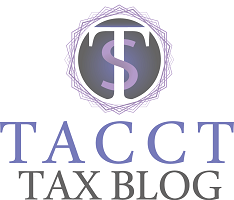
Refund Data
The Tax Cuts and Jobs Act (TCJA), passed in December 2017, enacted a number of broad changes: It introduced new tax brackets, included an expanded child care credit and changed the way itemized deductions are factored in, etc.
As some Americans are already discovering, certain people will be more affected by tax reform than others, and not all the surprises are pleasant ones.
For the week ending Feb. 1, 2019, IRS data shows the agency received 16.04 million individual tax returns, down 12.4% from the previous year, with an average refund being issued of $1,865. That’s down 8.4% from the $2,035 average refund issued at the same time last year. On the surface, this data makes it appear that the TCJA has pulled the wool over the eyes of the average American taxpayer, who is now taking home less than he or she was last year. But you have to do some digging to get to the truth of why refunds have declined.
If you normally make some big purchases with your tax refund, or use it toward a summer vacation, you may want wait to learn how much you’ll be getting back before you make any plans this year.
Why are Refunds Down this Year
Last July, the General Accountability Office (GAO) issued a 26-page report regarding individual and employer responsibilities with regard to tax withholding. Employers are required to withhold a certain percentage of your income, but workers also have the ability to modify their federal tax withholding by adjusting their W-4.
The problem, as described by the GAO, is that the TCJA made a number of changes to the tax code that, when combined with data limitations for the U.S. Treasury when crafting tax-withholding guidelines for 2018, led to more under-withholding and less over-withholding. Basically, this just means less money is being taken out of workers’ paychecks under the new Treasury model being implemented by employers, leading to smaller end-of-year refunds, and some folks actually owing money who had never owed before. That and workers not fully understanding these changes, meant few knew how to accurately adjust their tax withholding in 2018.
Under the previous tax code, about 75% of taxpayers were receiving a refund, but early data from the IRS shows that while returns received are down 12.4%, total refund issued has fallen by nearly twice as much (24.3%). In the view of the Treasury, the new system in which fewer people receive a refund is more balanced than the previous tax system.
Who’s Affected the Most
Here’s who’s most at risk for a lower refund this year:
- Those who did not adjust their withholding rates
- Those with large salaries in states with high taxes
- Those with work expenses they usually write off
Is this Good or Bad
You’ll be getting more of your money upfront, rather than offering the federal government an interest-free loan for possibly more than a year.
There’s been an incorrect belief among taxpayers that receiving a refund is a good thing. Unless you’re living without a budget and have absolutely no self-control with discretionary income, a tax refund (i.e., over-withholding) is a bad thing (if it’s not from refundable credits). If you were receiving a larger weekly, biweekly, or monthly paycheck, you could put your money to work now, rather than waiting more than a year to do so.
For example, receiving a higher paycheck now as a result of withholding changes under the TCJA could help consumers tackle a record amount of outstanding consumer debt. Instead of waiting months or longer to collect a large refund to apply to your outstanding debts, you could use the added income in each of your paychecks now to reduce your principal before interest has an opportunity to build on what you already owe.
Getting more of your earned income up front also means the possibility of putting this money to work in an emergency fund or invest it to earn you more money.
What to Do if You’re Worried
If you are concerned about your tax situation, the best thing to do is to file early and hold off on any big purchases, experts say.
“Taxpayers should file their returns or estimate their tax liability as soon as possible to prepare,” Kleiman says. “If money is owed, the balance does not have to be paid until April 15, even if the return is filed earlier.”
It’s also not a bad idea to consider the worst-case scenario, one in which you have to write an unexpected check to the IRS. Take a close look at your budget now to start looking for ways to save money where you can.
If you do end up owing the IRS, don’t panic. There are payment plans available if you can’t pay your entire tax bill when you file your return. And the IRS has said it may waive penalties if you’ve paid at least 85 percent of your 2018 tax liability.
Keep in mind that filing an extension will not get you relief. An extension does not extend your time to pay your taxes due. Instead, you’ll still have to pay about 90 percent of your tax bill by April 15 to safely avoid penalties.
If you have questions, you can contact TACCT.
Follow us: @the_tax_lady | TACCT on Facebook
Read our Tax Insight Newsletters
Schedule a Tax Appointment



